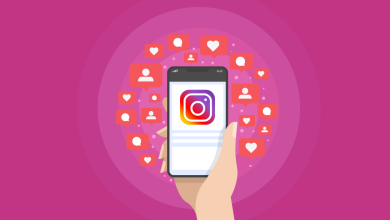
How To Increase The Click Through Rate Of Your Email
Sending emails is good, having a good open rate is good too, but is it really useful if you have a low click-through rate (CTR)? The ultimate goal of the newsletter and an email campaign is for list users to click on your content and land on your website. You can get the services of Best Email Marketing Agency in Washington The CTR is a much more revealing indicator than the opening rate on the interest of your audience and on their ability to engage with you. Note that the average CTR for emails across all industries is around 4.20%. In other words, out of 100 emails opened, 4 people click on your links.
It may sound low, but there are ways to increase your CTR. Here are ways to increase the click-through rate of your emails.
1. One topic per email
A mistake that many companies make, addressing several subjects and several themes in a single email. Be aware that users are subscribed to other newsletters and receive tons of other emails every day. If you manage to get them to open your email and they come across a lot of diverse and varied content, they will very quickly be lost and leave your email, without having clicked on one of your links.
So respect that: an email, a subject . This does not mean that you should place only one link. Several links can very well lead to several aspects of the same subject. Just don’t overload your followers’ attention, be aware that they usually lose focus after 8-10 seconds.
For example, if your email deals with SEO, it will be risky to speak and present links related to Facebook Ads. Especially if your email subject was about SEO. Stay consistent and focus on a theme, a problem and a result. If in your email, you help your subscribers to be better referenced on Google, do not present them with links to create Facebook advertising as a bonus, that goes without saying.
2. Prioritize short emails
As I said before, people receive dozens and hundreds of emails a day. Even if your writing quality is good, it is risky to write long emails of 500 words. Your subscribers, even the most loyal, don’t necessarily have time for that.
In addition to having a good quality of writing, you must also be good at synthesizing and shortening your content. Learn how to delete unimportant sentences, useless terms, expressions that do not come to serve your starting subject.
In short, you must write enough to make the user want to go further, without wasting too much time. That’s your ultimate goal, to find a happy medium between efficiency and brevity .
Avoid unnecessary images, sitelinks, long lists, etc. Go straight to the point and quickly present your solutions.
3. Increase the number of links
You have surely heard the expression “less is more” to highlight simplicity, especially in design. A simple interface will be more efficient and pay more. For emails, it’s a different story. According to several studies, the more links in emails, the better.
An email with 2 links will generally work better than an email with 1 link. Most readers need a little longer to click on your first link. They will therefore continue to read until they reach your second link, there they will be more “hot” to click. It may therefore be interesting to insert 2 links, or even more.
Some research has even concluded that emails with more than 5 links work better than those with less than 5 links. Do not hesitate to insert several. But be careful, keep in mind that these links must be consistent with the subject matter. Otherwise, your email may be seen as spam in the eyes of your subscribers.
4. Segment and address your audience
When you receive emails in your inbox, are the offers still relevant to who you are? If you send a newsletter to a user and they ask themselves the question “why did they send me this?” is that you are talking to the wrong person.
Non-targeted users who receive emails that do not correspond to them ask questions that can quickly discredit you. Imagine that you send with your newsletter web development advice, very well. Imagine that a writer received your newsletter, do you find that consistent?
The user in question may ask himself this kind of question:
- Are they scammers?
- How did they receive my email?
- What will happen if I click on their link?
So it’s a matter of acquisition and consistency here. The collection of mail must be done naturally and the user must know what your newsletter contains before registering.
You must therefore send your emails by segment. If you are a large communication agency, send certain emails only to audience A and other emails to audience B. Make sure that your emails reach the right people and therefore the right target.
5. Work on the editorial visual
Your emails should not be boring, stressful and too dense. The substance of your content should be good but don’t forget the form. Nothing is worse than large blocks of text that are difficult to read and full of technical jargon.
Again, here too you have to bear in mind that users do not have the patience to read your content in detail. Similar to blog posts, in most cases readers skim content, headings, bulleted lists, bolded words, etc. So even if you manage to deploy hyper qualitative content, users will not read, because this content in question has no place in a newsletter.
The newsletter is fast consumption, a bit like a post on social networks. You must therefore:
- Create space between lines;
- Rely on short, simple and impactful sentences;
- Use bulleted lists and numbered lists;
- Have titles, subtitles
- Use highlighting, color, bolding, etc.
The goal is to improve readability and make the content easily consumable. Readers should find it enjoyable to read your content quickly.




It’s very interesting! If you need help, look here: hitman agency
You made some decent points there. I looked on the net to learn more about the issue and found most people will go along with your views on this website.
Good article! We are linking to this particularly great article on our website. Keep up the great writing.
Good info. Lucky me I ran across your website by chance (stumbleupon). I have saved it for later.
Aw, this was an exceptionally nice post. Finding the time and actual effort to make a top notch article… but what can I say… I put things off a whole lot and don’t manage to get nearly anything done.
I’ve been taking cornbread cbd gummies for sleep concerning a while instantly, and they’ve honestly been a game-changer as regards force and sleep. The best part? No grogginess in the morning honourable a calm, relaxed feeling in the vanguard bed. Supplementary, they bit extraordinary, unlike some other supplements I’ve tried. I was skeptical at first, but after devotedly using them, I can decidedly bruit about they domestics with unwinding after a great day. If you’re looking on a reasonable practice to deject without any preternatural side effects, CBD gummies are worth trying. Honest make unflinching you provoke a eminence brand with third-party testing!